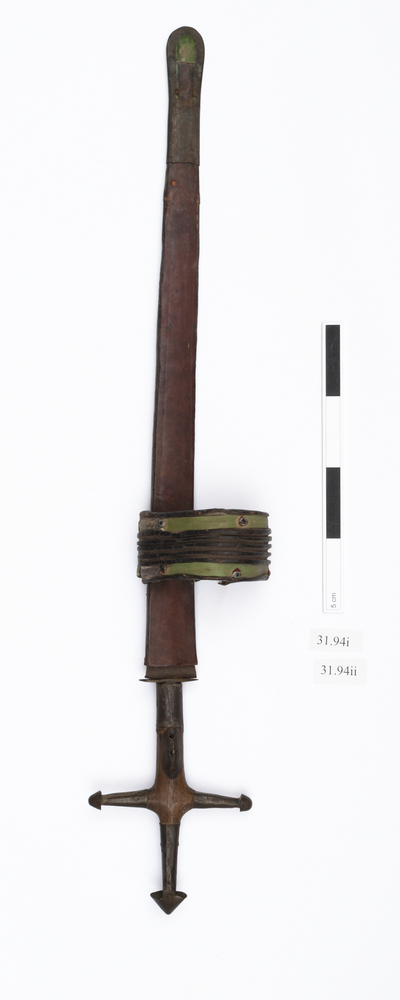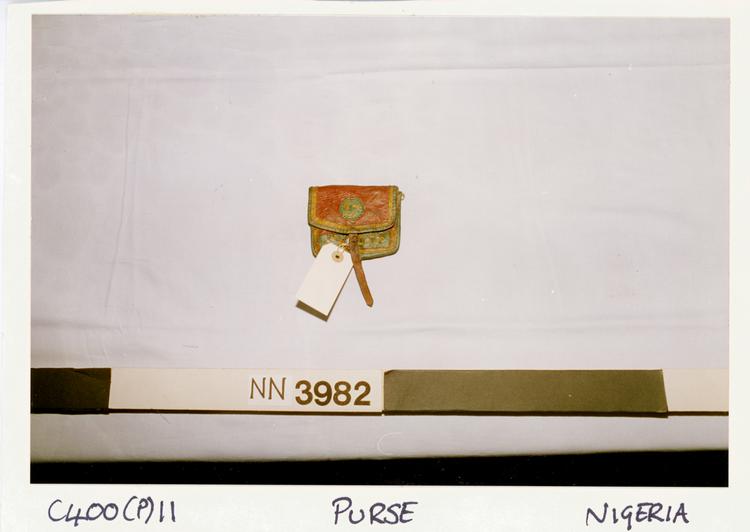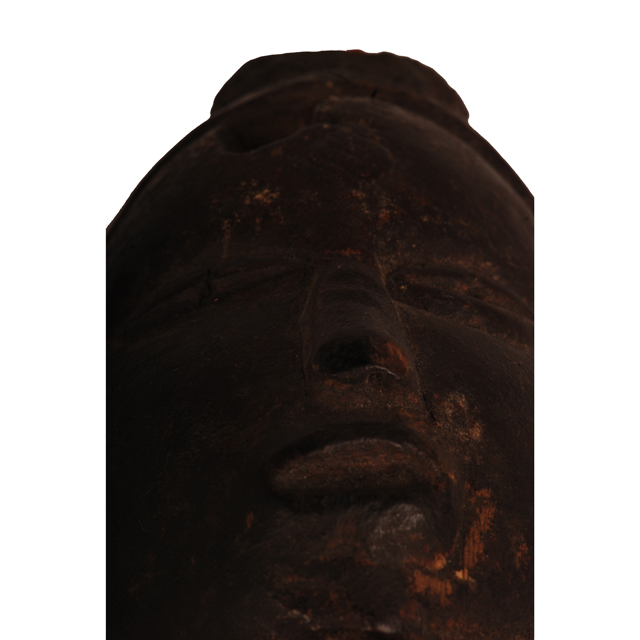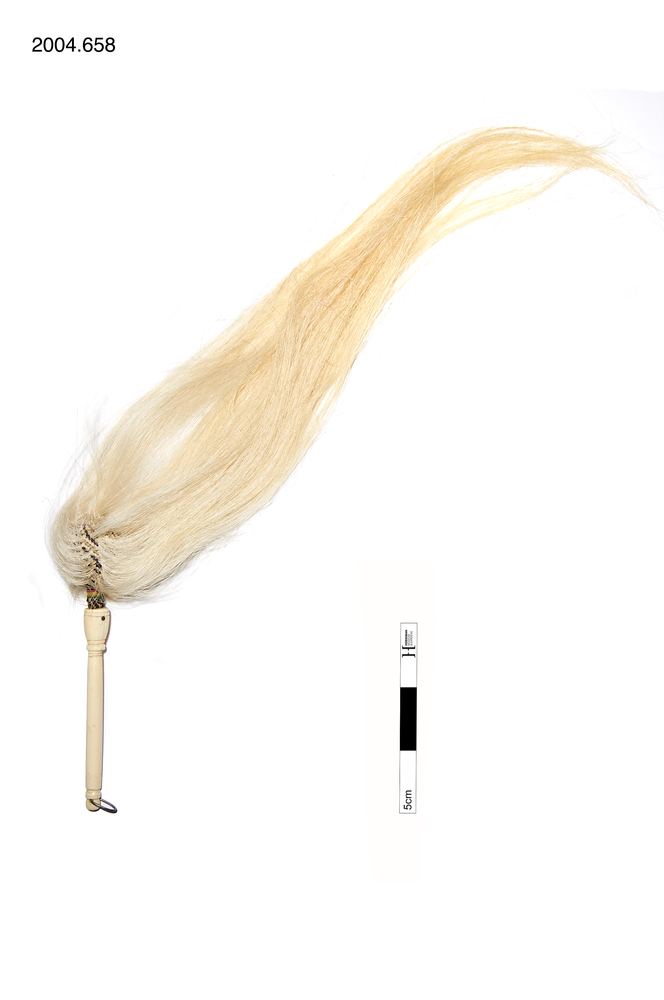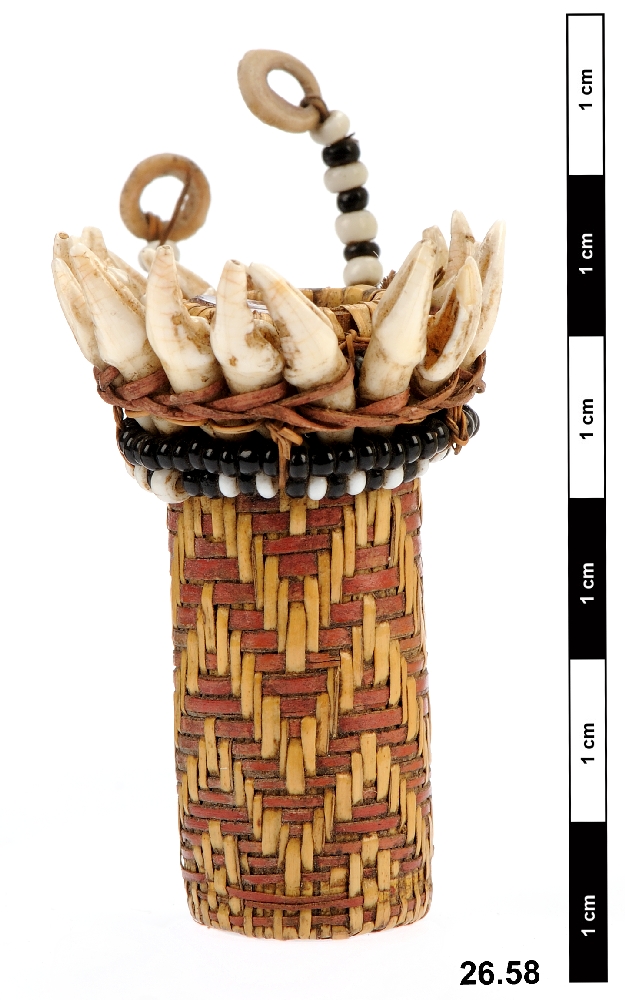
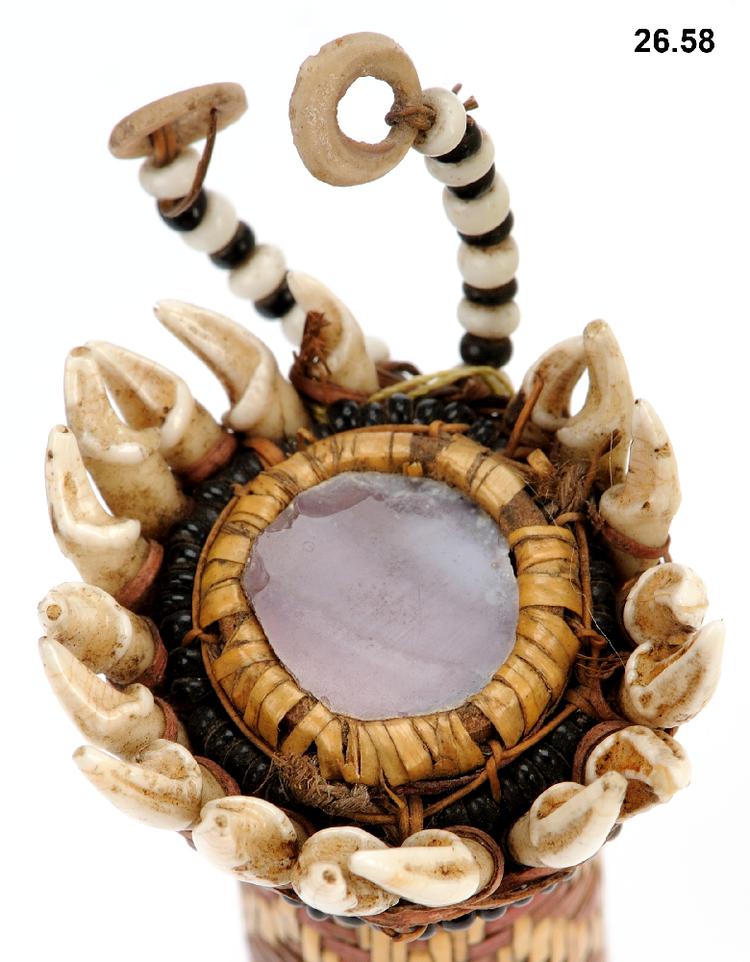
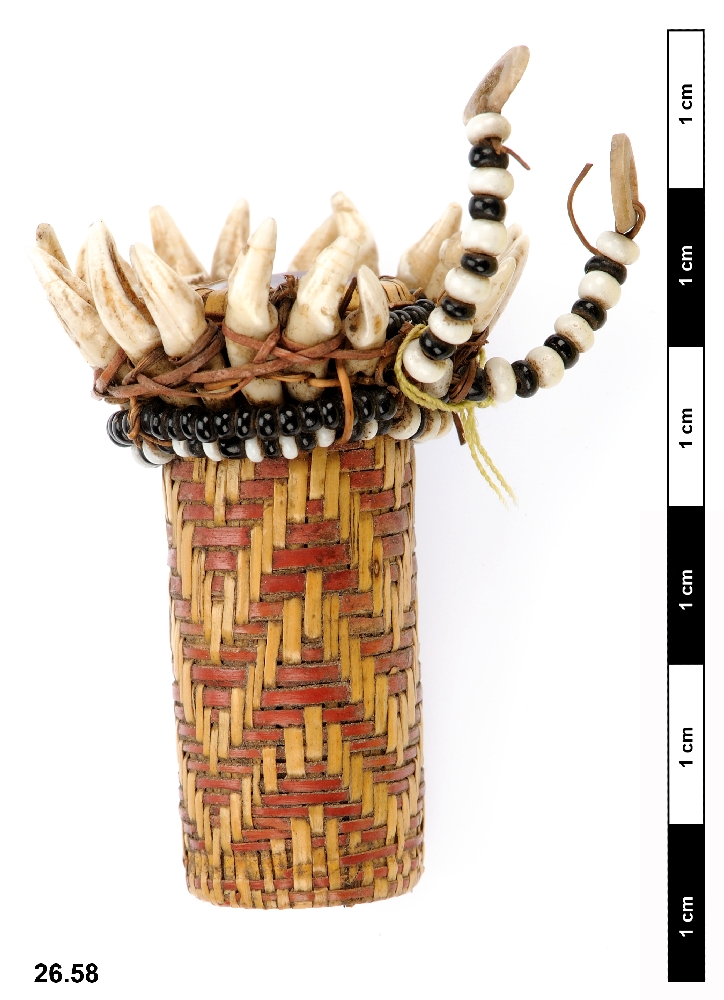

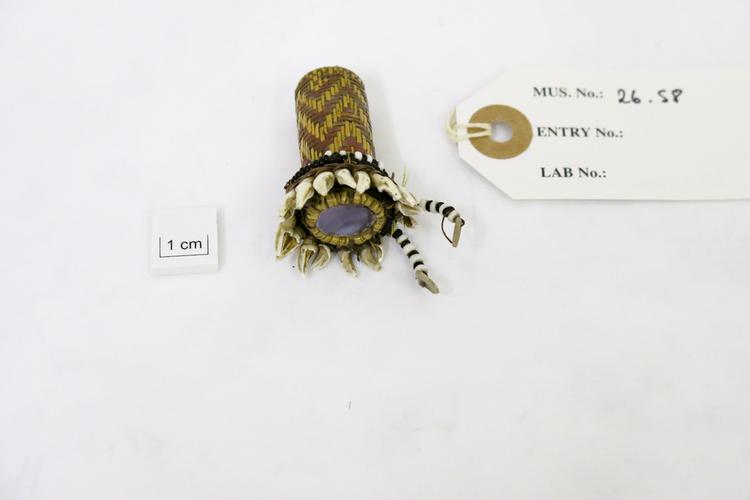

Ear plug constructed on a short thick bamboo cylinder, which is overlaid with yellow and red orchid stem fibre binding in a zig zag pattern, and terminates in a rosette of bat teeth around a disk of purple pearl shell. Below the rosette of teeth there is a ring of black and white alternating glass beads and two tassels of the same construction.
Man’s Ear Ornament, Possibly Malaita, Solomon Islands, Central Melanesia This ornament was made to sit in a distended ear piercing, and would have formerly been one of a pair. Its striking impression is reminiscent of a sea anemone or a fine flower, achieved by combining a number of materials. Here, rats’ teeth are the most striking feature, and mimic greatly-valued porpoise teeth in miniature. In some of the Solomon Islands, men were traditionally buried with their finer body adornments, although these treasures would often be taken back again when the man’s skull was dug up to preserve it as a tindalo (revered ancestral spirit). This was not considered theft, as the ornaments of a great man themselves developed a kind of a ‘ghost’ called a nunuai, which the spirit of the deceased took to wear in the afterlife. Bamboo, orchid stem fibres, vegetable fibre, pearlshell, rat teeth, Western glass beads. Late 19th Century. Formerly in the private collection of the Danish biologist P. W. Lund, and purchased for the Museum with other ethnographic specimens at Stevens’ Auction Rooms in 1926.




